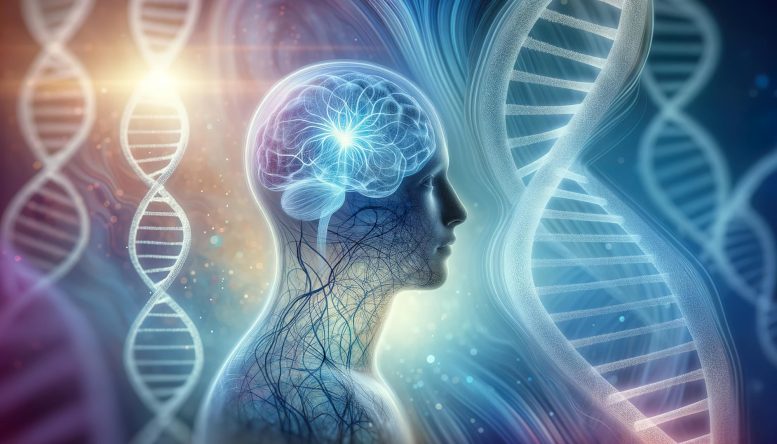
Stanford Medicine researchers and international colleagues discovered that about 20% of people carry a gene variant that reduces the risk of Alzheimer’s and Parkinson’s diseases by over 10%. This variant, known as DR4, could potentially enhance the efficacy of a future vaccine against these neurodegenerative conditions. The study, involving extensive global data analysis, also suggests a link between the tau protein and both diseases, opening new avenues for targeted therapies and vaccines.
A large-scale analysis of medical and genetic information revealed that individuals carrying a specific variant of a gene linked to immune function had a reduced risk of developing Alzheimer’s and Parkinson’s diseases.
Approximately 1 in 5 individuals possess a specific gene variant that seems to offer resistance to both Alzheimer’s and Parkinson’s diseases. This discovery, made by Stanford Medicine researchers and their collaborators, suggests that these individuals might particularly benefit from a future vaccine aimed at slowing or halting these common neurodegenerative disorders.
An analysis of medical and genetic data from hundreds of thousands of people of diverse ancestries from several continents has revealed that carrying this gene version, or allele, reduced people’s chances of contracting either Parkinson’s or Alzheimer’s by more than 10% on average.
The evidence suggests that a protein called tau, which is notorious for aggregating in the brains of Alzheimer’s patients, may also be involved, in some mysterious way, in the development of Parkinson’s disease.
The findings and implications are described in a paper recently published in the Proceedings of the National Academy of Sciences. Emmanuel Mignot, MD, Ph.D., the Craig Reynolds Professor in Sleep Medicine and a professor of psychiatry and behavioral sciences, shares senior authorship with Michael Greicius, MD, the Iqbal Farrukh and Asad Jamal Professor and a professor of neurology and neurological sciences, and Jean-Charles Lambert, Ph.D., director of research for Inserm at the University of Lille in France. Lead authors are Yann Le Guen, Ph.D., assistant director of computational biology in Stanford Medicine’s quantitative sciences unit; Guo Luo, Ph.D., an instructor of sleep medicine; former postdoctoral scholar Aditya Ambati, Ph.D.; and Vincent Damotte, Ph.D., a bioinformatician associated with Lambert’s group.
The protective allele identified in the study is called DR4.
“In an earlier study we’d found that carrying the DR4 allele seemed to protect against Parkinson’s disease,” Mignot said. “Now, we’ve found a similar impact of DR4 on Alzheimer’s disease.”
The Stanford Medicine team combined dozens of medical and genetic databases collected from numerous countries — in Europe, East Asia, the Middle East, and South and North America. All told, the databases included more than 100,000 people with Alzheimer’s disease and more than 40,000 with Parkinson’s disease. The scientists contrasted the incidence and age of onset of Alzheimer’s and Parkinson’s among people with DR4 versus those without it and found a roughly 10% risk reduction in those carrying DR4.
“That this protective factor for Parkinson’s wound up having the same protective effect with respect to Alzheimer’s floored me,” Mignot said. “The night after we found that out, I couldn’t sleep.”
The investigators also analyzed data from the autopsied brains of more than 7,000 Alzheimer’s patients and found that DR4 carriers had fewer neurofibrillary tangles — long, filamentous aggregates, composed largely of tau, that characterize Alzheimer’s disease — as well as a later onset of symptoms, than their non-DR4 counterparts. The presence of neurofibrillary tangles has been shown to correlate strongly with the condition’s severity.
Carrying DR4 also correlated with a later onset of symptoms in Parkinson’s patients, even though neurofibrillary tangles aren’t typically seen in that disease.
This study hints that tau, an essential player in Alzheimer’s, may turn out to also play some kind of role in Parkinson’s, Mignot said, although what that role may be is not clear.
A cell’s surface is its display window
DR4 is one among copious alleles of a gene called DRB1, which itself is one among many in a large complex of genes — called the human lymphocyte antigen complex, or HLA — that’s crucial to rendering cells’ inner contents visible to the immune system.
A cell’s outer membrane keeps the cell’s insides in and its outsides out. But that’s not all it does. It also serves as a display window, exposing fragments of the proteins inside it to the immune system.
Routine exposure of these fragments, or peptides — stand-alone snippets of chopped-up proteins — on the cell’s surface (its outer membrane) allows roving immune cells to peruse them. By inspecting cell-surface peptides, these patrolling immune cells can see if there’s anything funny going on inside — namely, whether any foreign or altered protein might reside in the cell, implying an infection or cancerous state, respectively.
Facilitating this window shopping are specialized proteins that can grab onto and encase all these peptides and display them on cell surfaces in a way that’s optimal for immune recognition. These specialized proteins are the products of the HLA genes.
Each of the numerous HLA genes comes in a vast variety of alleles. Each of us inherits a different collection of these alleles. Because different HLA alleles’ protein products bind to different sets of peptides, the assortment of peptides a person’s cells display for immune surveillance varies from one person to the next.
When the immune system spots a surface peptide it thinks it’s never seen before, it can mount a powerful attack on any cell displaying that peptide on their surface. Now and then, the judgment turns out to be a case of mistaken identity. Autoimmunity is such a phenomenon.
Mignot thinks DR4 is involved in what has been called “protective autoimmunity”: A certain peptide that DR4 knows how to grab onto and display is actually a chemically modified segment of a normal protein our cells make — tau. It’s the chemical modification that’s causing trouble.
The tau connection?
Noting DR4’s beneficial effects on tau levels and pathologies in both Alzheimer’s and Parkinson’s, the researchers zeroed in on tau. They chopped molecules of the protein into 482 peptides collectively spanning tau’s entire sequence, then placed them into separate dishes along with DR4’s protein product (also called DR4) to see if it binds strongly to any of those peptides.
In addition, the researchers tested all the biologically likely chemical modifications each of those peptides can accrue once it’s been produced inside a cell.
DR4 exerted an especially mighty grip on a single peptide. Called PHF6, this segment of the tau protein is frequently altered in the brains of Alzheimer’s patients by a change called acetylation — the affixation of a small chemical clump to one of the protein’s constituent building blocks on that segment. Acetylated PHF6 has already been implicated in tau molecules’ tendency to aggregate into neurofibrillary tangles.
“The only peptide DR4 bound to strongly was PHF6 — and then only when this peptide was acetylated,” Mignot said. It’s already known that PHF6 acetylation facilitates tau aggregation into neurofibrillary tangles, he noted.
The acetylation may “fool” the immune system into thinking PHF6 is a foreigner and a menace, Mignot said, leading the immune system to attack and demolish incipient neurofibrillary tangles.
He thinks it may be possible to make DR4 work harder in those who carry it by creating a vaccine consisting of acetylated PHF6. In drawing the immune system’s attention to this modified peptide, such a vaccine might interfere with tau’s aggregation. In people who carry any of the protective variants of DR4 (not all of them are protective) and whose brains have begun to accumulate tau aggregates, a vaccine could delay the onset or slow the progression of Alzheimer’s and possibly Parkinson’s, Mignot suggested.
People who don’t carry DR4 wouldn’t benefit from this vaccine, Mignot noted. Furthermore, DR4 comes in a spectrum of subtypes, distinguished by minuscule differences in their genetic sequence. Of DR4’s six or seven most common subtypes, one may be more common among people of one ancestry, while others may be more dominant in people of other ancestries. The DR4 subtype most common among East Asians doesn’t seem to help as much in warding off either neurodegenerative disease as the DR4 subtypes most common in other populations do, for example.
A blood test ought to be given to see who should or shouldn’t get vaccinated, Mignot said.
Reference: “Multiancestry analysis of the HLA locus in Alzheimer’s and Parkinson’s diseases uncovers a shared adaptive immune response mediated by HLA-DRB1*04 subtypes” by Yann Le Guen, Guo Luo, Aditya Ambati, Vincent Damotte, Iris Jansen, Eric Yu, Aude Nicolas, Itziar de Rojas, Thiago Peixoto Leal, Akinori Miyashita, Céline Bellenguez, Michelle Mulan Lian, Kayenat Parveen, Takashi Morizono, Hyeonseul Park, Benjamin Grenier-Boley, Tatsuhiko Naito, Fahri Küçükali, Seth D. Talyansky, Selina Maria Yogeshwar, Vicente Sempere, Wataru Satake, Victoria Alvarez, Beatrice Arosio, Michael E. Belloy, Luisa Benussi, Anne Boland, Barbara Borroni, María J. Bullido, Paolo Caffarra, Jordi Clarimon, Antonio Daniele, Daniel Darling, Stéphanie Debette, Jean-François Deleuze, Martin Dichgans, Carole Dufouil, Emmanuel During, Emrah Düzel, Daniela Galimberti, Guillermo Garcia-Ribas, José María García-Alberca, Pablo García-González, Vilmantas Giedraitis, Oliver Goldhardt, Caroline Graff, Edna Grünblatt, Olivier Hanon, Lucrezia Hausner, Stefanie Heilmann-Heimbach, Henne Holstege, Jakub Hort, Yoo Jin Jung, Deckert Jürgen, Silke Kern, Teemu Kuulasmaa, Kun Ho Lee, Ling Lin, Carlo Masullo, Patrizia Mecocci, Shima Mehrabian, Alexandre de Mendonça, Mercè Boada, Pablo Mir, Susanne Moebus, Fermin Moreno, Benedetta Nacmias, Gael Nicolas, Shumpei Niida, Børge G. Nordestgaard, Goran Papenberg, Janne Papma, Lucilla Parnetti, Florence Pasquier, Pau Pastor, Oliver Peters, Yolande A. L. Pijnenburg, Gerard Piñol-Ripoll, Julius Popp, Laura Molina Porcel, Raquel Puerta, Jordi Pérez-Tur, Innocenzo Rainero, Inez Ramakers, Luis M. Real, Steffi Riedel-Heller, Eloy Rodriguez-Rodriguez, Owen A. Ross, Jose Luís Royo, Dan Rujescu, Nikolaos Scarmeas, Philip Scheltens, Norbert Scherbaum, Anja Schneider, Davide Seripa, Ingmar Skoog, Vincenzo Solfrizzi, Gianfranco Spalletta, Alessio Squassina, John van Swieten, Raquel Sánchez-Valle, Eng-King Tan, Thomas Tegos, Charlotte Teunissen, Jesper Qvist Thomassen, Lucio Tremolizzo, Martin Vyhnalek, Frans Verhey, Margda Waern, Jens Wiltfang, Jing Zhang, Henrik Zetterberg, Kaj Blennow, Zihuai He, Julie Williams, Philippe Amouyel, Frank Jessen, Patrick G. Kehoe, Ole A. Andreassen, Cornelia Van Duin, Magda Tsolaki, Pascual Sánchez-Juan, Ruth Frikke-Schmidt, Kristel Sleegers, Tatsushi Toda, Anna Zettergren, Martin Ingelsson, Yukinori Okada, Giacomina Rossi, Mikko Hiltunen, Jungsoo Gim, Kouichi Ozaki, Rebecca Sims, Jia Nee Foo, Wiesje van der Flier, Takeshi Ikeuchi, Alfredo Ramirez, Ignacio Mata, Agustín Ruiz, Ziv Gan-Or, Jean-Charles Lambert, Michael D. Greicius and Emmanuel Mignot, 29 August 2023, Proceedings of the National Academy of Sciences.
DOI: 10.1073/pnas.2302720120
Stanford University’s office of technology licensing has filed a patent application on intellectual property associated with the findings in this study.
Some 160 additional researchers from as many institutions in roughly 25 countries contributed to the work.
The study was funded by the National Institutes of Health (grants AG060747, AG066206 and AG066515), the European Union, the Michael J. Fox Foundation, the Alzheimer’s Association, the Iqbal Farrukh and Asad Jamal Fund, the European Alzheimer DNA BioBank, the Japan Agency for Medical Research and Development, the Einstein Center for Neurosciences in Berlin, the Swedish Research Council, the European Research Council, and the Swedish State Support for Clinical Research.

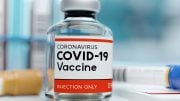
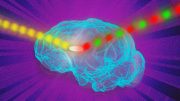



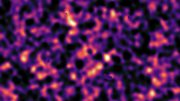
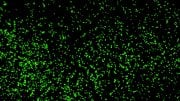

Just another massive study ignorantly and incompetently based on incomplete information. Mainstream medicine still fails to recognize, research and/or factor nearly subclinical non-IgE-mediated food allergies (e.g., Dr. Arthur F. Coca; by 1935) and/or officially (FDA in the US) approved food poisoning (e.g., soy [late 1960s]; cultured “free” MSG [1980, US], minimally) into the equation. As with Google “search” (AI enhanced?) vast numbers of wrong answers in an instant do not add-up to one right answer. Furthermore, the American predilection to always seek to find a drug to solve a dietary problem only delays the more effective practice of identifying and removing the underlying causes; treatments v. prevention. Only once the underlying cause of a precludeable epidemic is addressed would it make sense to create a vaccine to treat the exceptions to the rule. And, especially in the US, research funding practices should reflect that.